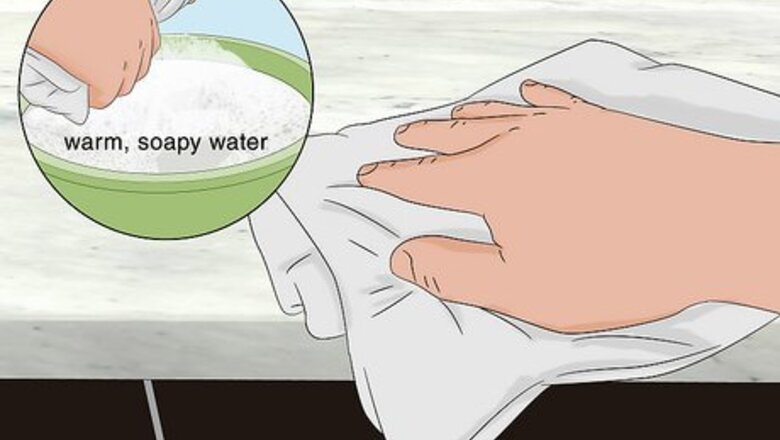
views
- Clean your countertop, put painter’s tape around the damaged area, and fill in the chip with superglue or colored epoxy. Smooth it out with sandpaper after 24 hours.
- If you have a large crack in your countertop, wash the surface, surround the crack with tape, and fill it in with caulk.
- For a faster process, fill the crack with acrylic from a quartz repair kit, place the curing strip over it, and shine an LED on the area until it’s fully dry (5-10 minutes).
Repairing Minor Chips with Superglue, Adhesive Filler, or Epoxy
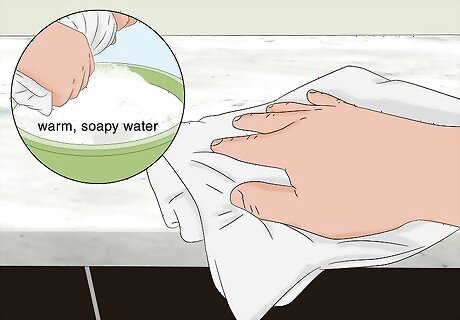
Clean the counter with dish soap and water. Get rid of any dust and debris around the chip before you start repairing it. Clean the countertop with a soft cloth dipped in warm, soapy water. Never use bleach or ammonia on quartz, as they can dull the surface. Wait for it to completely dry before beginning the repairs.
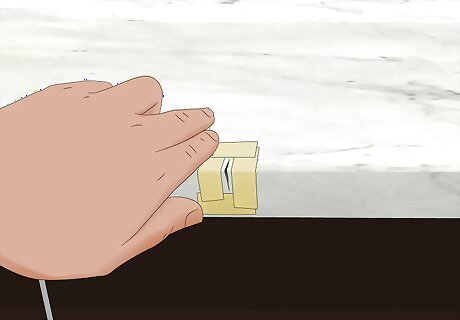
Surround the chip with masking tape. Stick strips of masking tape around the chipped area to make it easier to apply the adhesive and prevent stains. Get the tape close to the chip, but don’t overlap it.

Fix cracks on light-colored countertops with superglue. Adhesive filler or superglue are great materials for repairing minor chips on light surfaces. Apply thin coats of glue over the chip with a brush or spatula until the area is level with the surface again. Let the glue sit for at least 24 hours. Don’t glob on the glue—that’ll make the curing process take much longer. Use superglue for chipped surfaces and thicker adhesive filler for chipped edges. If you still have the chipped piece, just use the superglue to glue it back on.
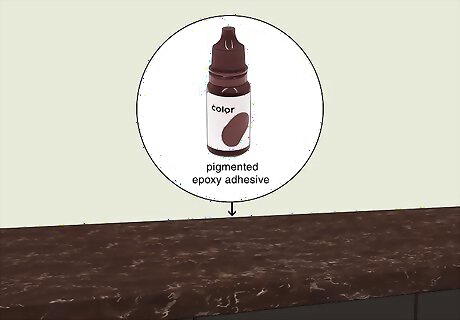
Use pigmented epoxy adhesive for dark or textured counters. If you have a dark countertop, opt for a pigmented epoxy instead of superglue. Mix the epoxy according to the instructions on the package (usually, it's a 1:1 ratio) and add your dye. Apply thin coats with a spatula until the chip is entirely full, then scrape off the excess. Let it dry for 24 hours. The epoxy mix may shrink a bit while drying, so it's better to over-fill the chip and sand down the excess later than to underfill it. Once again, use the epoxy to reattach the chipped-off piece if you have it.
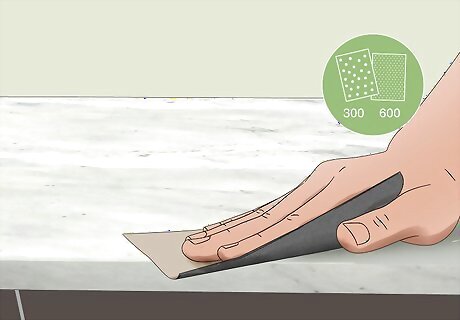
Smooth the edges with a razor blade and sandpaper. Once the chip is entirely full, clean up the excess epoxy by gliding the blade over the surface. Use superfine sandpaper with a 360 to 600 grit to smooth over the patch once it hardens, which usually takes about 24 hours.
Patching Surface Cracks with Caulk
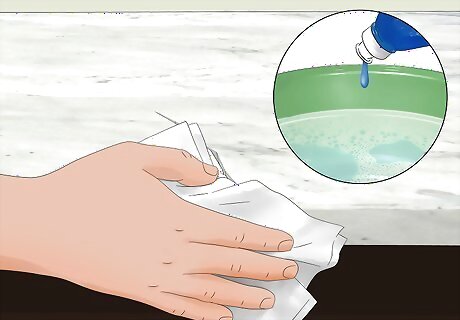
Clean the cracked area. Use a damp cloth and dish soap to clean the area before you get started. Dry it thoroughly before beginning the repair.
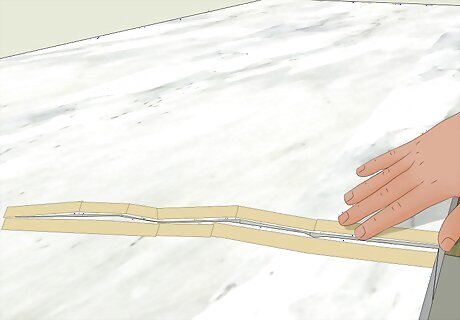
Stick masking tape around the crack to avoid caulk stains. Working with caulk can get messy, so stick strips of masking tape around the crack to avoid it from getting on the rest of the countertop. It also helps you get an even line while caulking the crack.
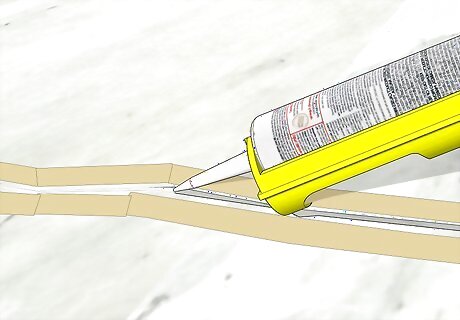
Squeeze caulk in the crack. Slowly squeeze the caulk into the biggest part of the crack with a caulk tube or gun. Move steadily while you fill in the rest. If you don’t think you can get a smooth line in one try, use urethane acrylic caulk. It’s easier to clean up, and you can apply a second layer on top if required. Wear rubber gloves while working with silicone caulk.
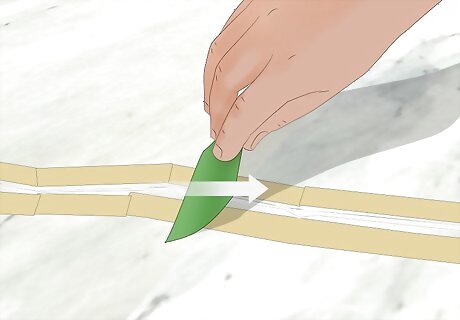
Level the caulk evenly. Use a spatula to get rid of the excess caulk, then smooth and flatten the line with a piece of hard plastic or your wet index finger. Repeat the process until the chip or crack is level with the rest of the countertop.
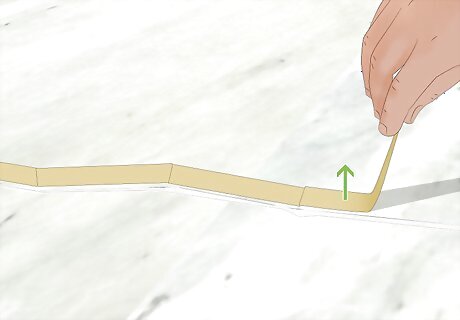
Remove the masking tape and let it dry. Once the crack is filled, remove the tape and allow the caulk to cure for the amount of time specified by the manufacturer. Gently scrape off any dried excess caulk with a razor blade.
Using a Light-Cure Quartz Repair Kit
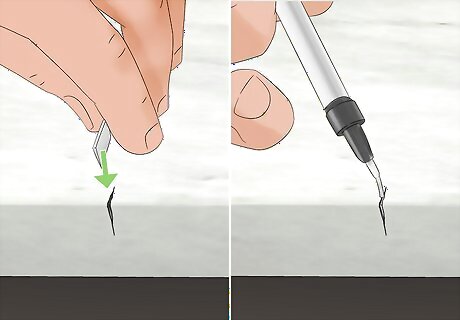
Fill surface chips and cracks with acrylic. Take the filling material out of your quartz repair kit (it’s often in a syringe), and put on a tip, if needed. Squeeze the filler into the chip until it’s completely full.

Cover the chip with a curing strip. Place a curing strip, or thin sheet of plastic, over the chip. The strip presses the material into the hole and ensures that the area is totally flat. Smooth everything down by running a popsicle stick or coffee stirrer over the strip.
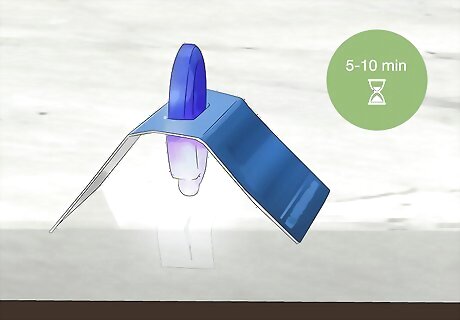
Cure the acrylic with an LED light. Light-cure repairs use—you guessed it—light to harden the material filling the crack. Take the light from your kit, put it in its stand, and position it over the chip. Turn on the light and let it sit for 5-10 minutes. Get the light as close as you can without touching the curing strip. When the acrylic feels hard to the touch, it’s done curing. If it feels at all soft or tacky, keep it under the light.

Sand and polish your countertop. Once the acrylic has cured, wipe the area down with rubbing alcohol, and check to see if the surface is completely flat. If it isn’t, use the sandpaper from your kit to rub off excess acrylic, put a few drops of water on it, then use a superfine polishing sandpaper to smooth everything out. Sand your countertop very lightly—using too much pressure can scratch the surface. Polish the area with a fine grit paste, if your kit includes it.
Preventing Cracks and Chips
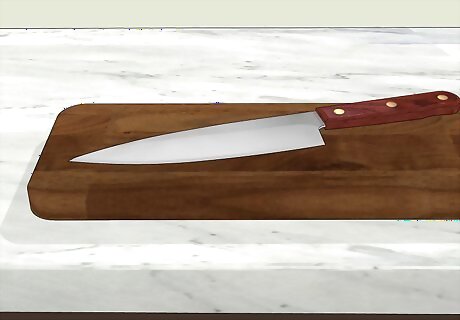
Use a cutting board. Quartz can be damaged by sharp objects, so never cut food directly on it. Instead, use a cutting board.
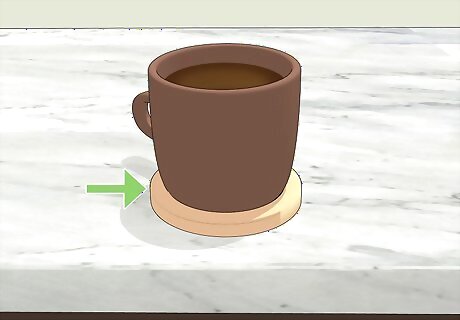
Put down hot and cold items on pads or oven mitts. Although quartz can withstand heat for a while, quick temperature changes can cause your countertop to crack. If you’ve got an icy pitcher of water or a hot pan from the stove, don’t put it directly on the counter.
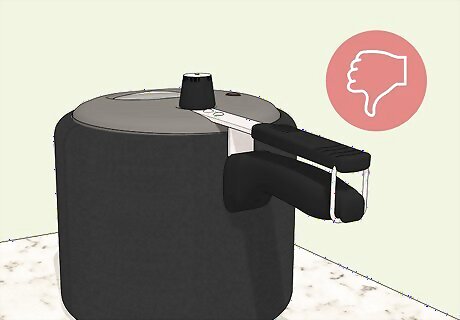
Keep heavy objects off the counter. If you keep heavy things (like pots and pans or filled fruit bowls) on your countertop, it’s likely to form cracks at the edges. Decorate your counters with lightweight things instead, and be careful when moving things around, especially in the kitchen. Countertops can chip if they’re hit with a heavy pan. If you have to put something heavy on the countertop—say, a stand mixer—set it down gently. Dropping something heavy can immediately form a crack or chip.
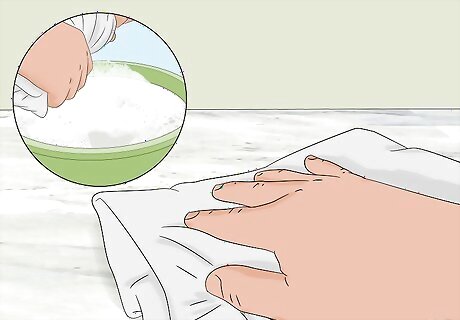
Wash the countertop with soap and water. Quartz countertops are made with resin, so abrasive or acidic cleaners can break down the sealant and cause cracks. Use soapy water to clean your counters, instead.

Get a professional to install your counters. If a countertop is installed poorly there’s a much higher risk of it getting chipped. Always hire a professional to do the work. Not only are they trained to put in countertops correctly, but they also know which materials are best to use and hold up the longest.


















Comments
0 comment